HELL WINDOW CRYSTALS
(Os Cristais da Janela do Inferno)


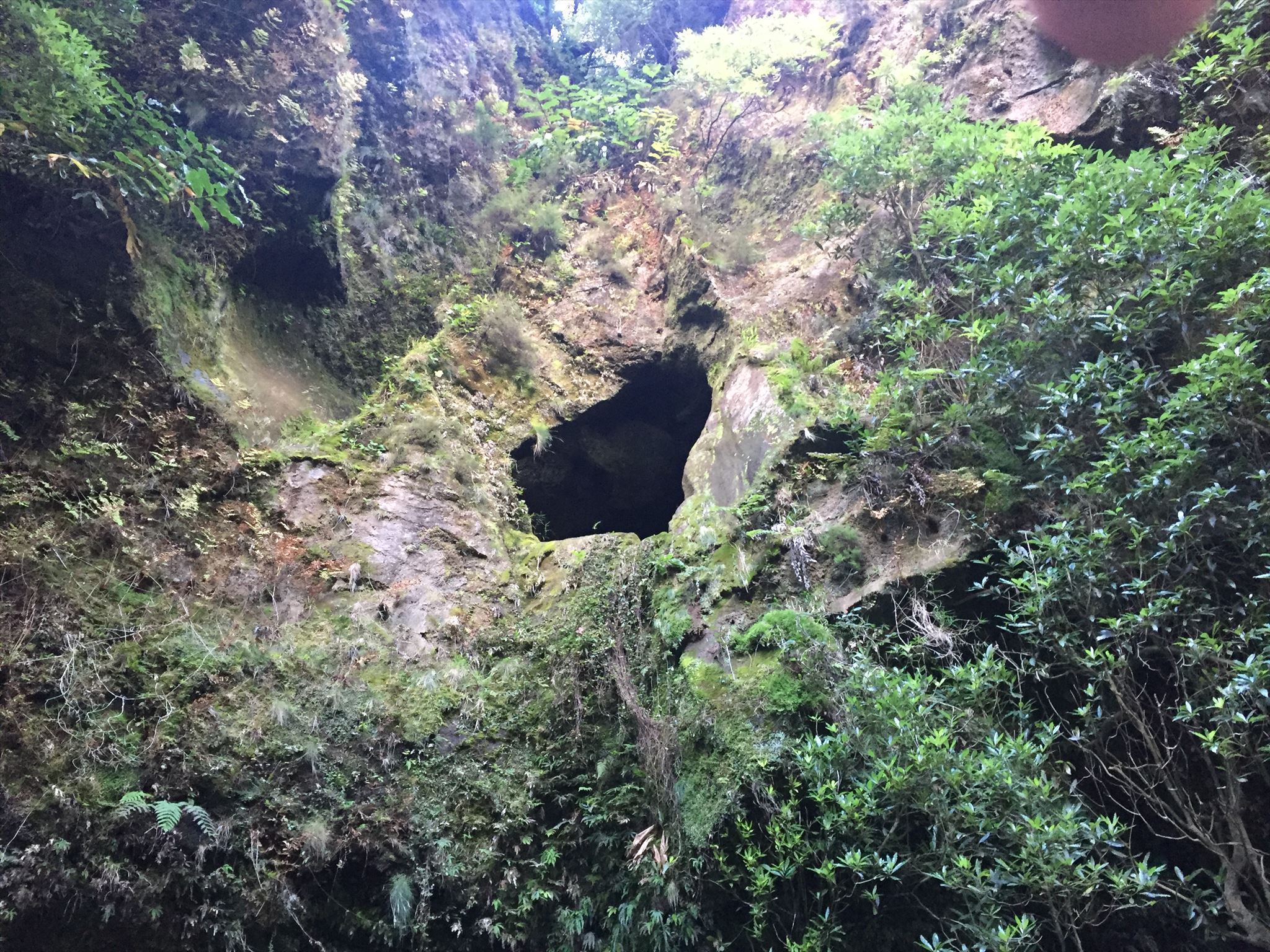

EARTHCACHE

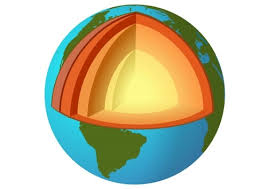
PORTUGUÊS

JANELA DO INFERNO
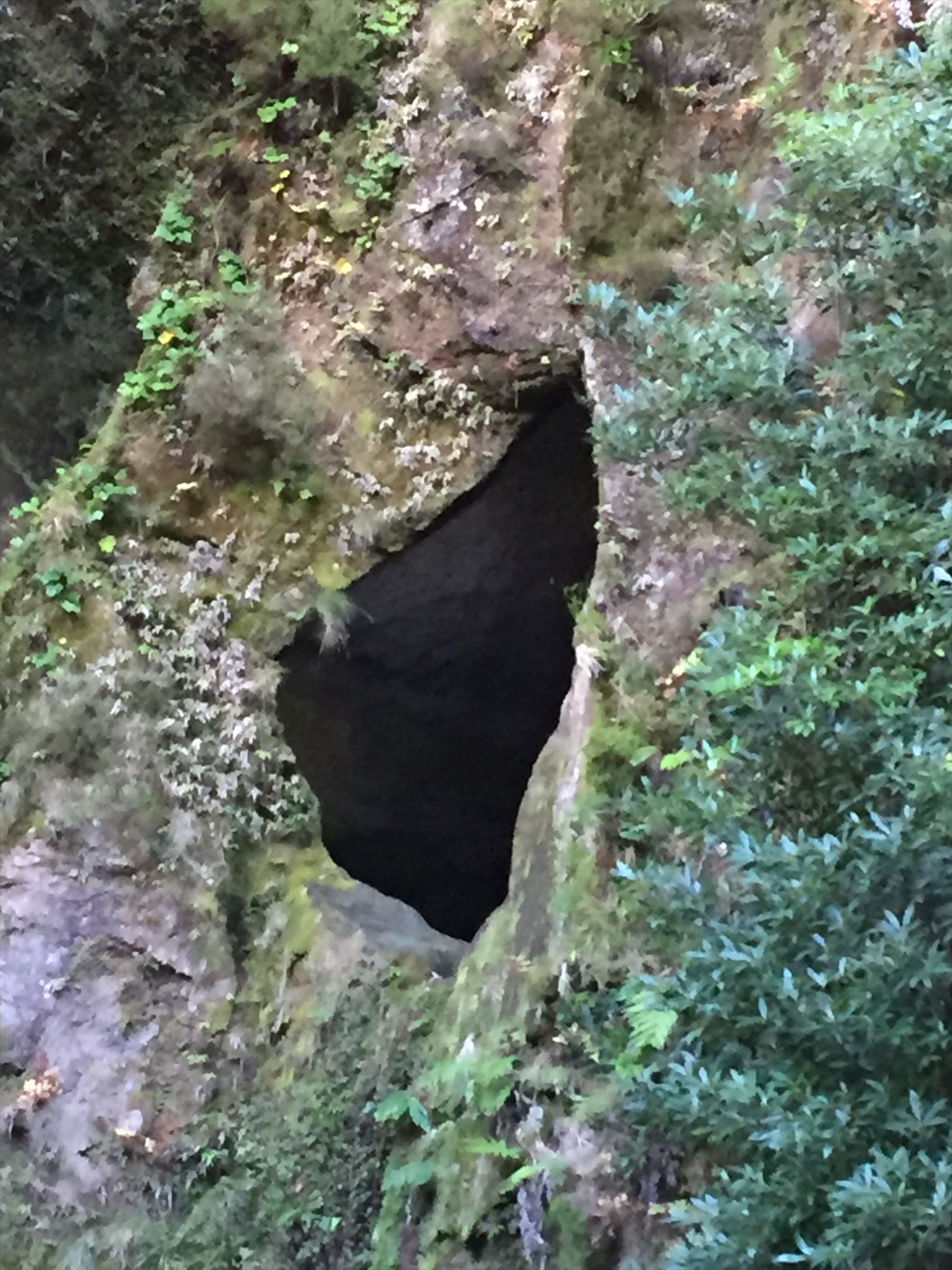
Rota da Água - Janela do Inferno - São Miguel PRC 37 SMI
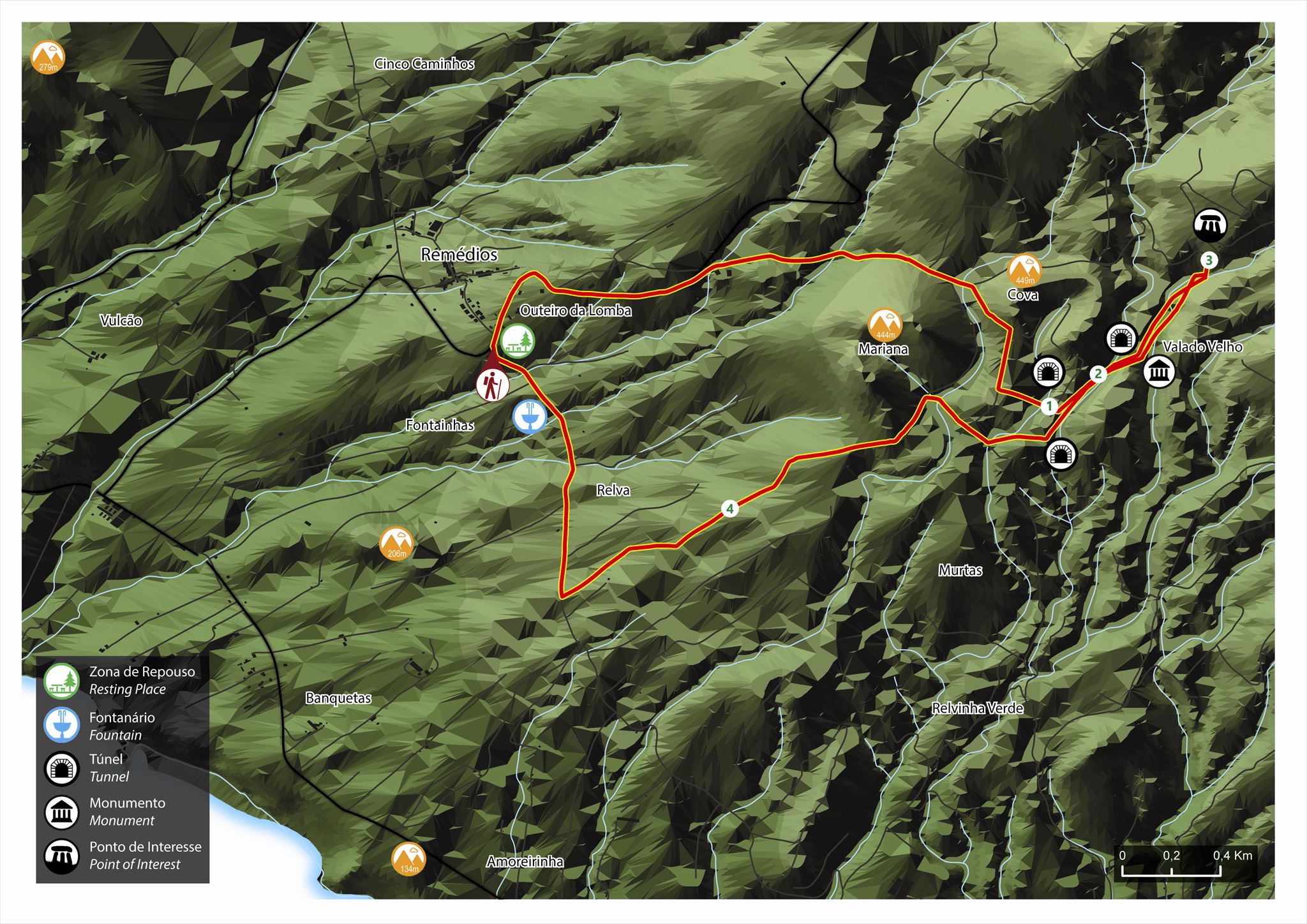
INFORMAÇÕES
Categoria - Circular
Dificuldade - Fácil
Extensão - 7.3 km
Tempo Médio - 2h30

“Esta pequena rota circular tem início no parque de merendas do lugar dos Remédios, concelho da Lagoa. Este percurso tem vários túneis ao longo da sua extensão, pelo que é aconselhável o uso de uma lanterna na sua transposição.Siga as indicações ao longo da estrada que sobe para a Lagoa do Fogo, virando à direita para um caminho de cimento que dá acesso a vários pastos agrícolas. Continue até encontrar uma viragem à direita para um caminho de terra em direcção a Sul, entre o Pico da Mariana e o Pico da Cova. Ao chegar a um cruzamento, deverá tomar o caminho à direita e posteriormente à esquerda, passando pelo interior de um pasto. O percurso segue por um antigo aqueduto, sob a forma de túnel, com cerca de 50 m de comprimento. Daqui o trilho desenvolve-se ao longo da Ribeira Seca, atravessando uma série de imponentes aquedutos que serviam no passado a antiga Fábrica do Álcool da Lagoa e atualmente fazem o abastecimento público de água ao concelho.
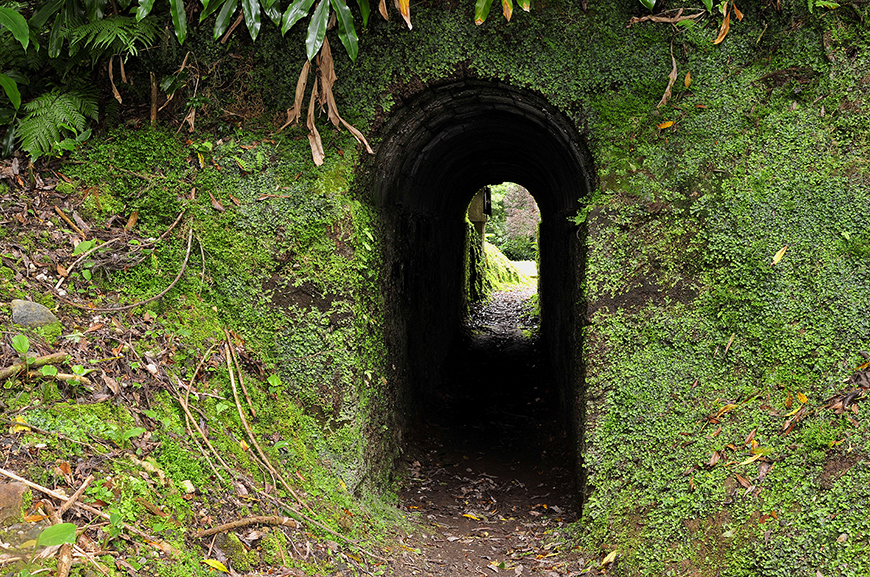
Um pouco depois irá chegar a um local de interesse – Janela do Inferno – uma parede vertical, rica em nascentes e onde é possível observar uma cavidade, criada pela poder erosivo da água. Na base existe um charco natural, onde é possível observar Tritões (Triturus cristatus) em várias fases do seu ciclo de vida (larvas aquáticas, juvenis e adustos). Aproveite para apreciar a beleza deste lugar e retemperar as forças.
Faça o percurso no sentido inverso, ao longo da margem esquerda da Ribeira Seca, chegando a outro túnel escavado na terra, que facilita a passagem da água ao nível do solo. Após atravessar o túnel o caminho segue por entre pastos agrícolas de volta ao ponto inicial. Ao longo deste percurso desfrute das amplas vistas sob o concelho da Lagoa e de Ponta Delgada”.
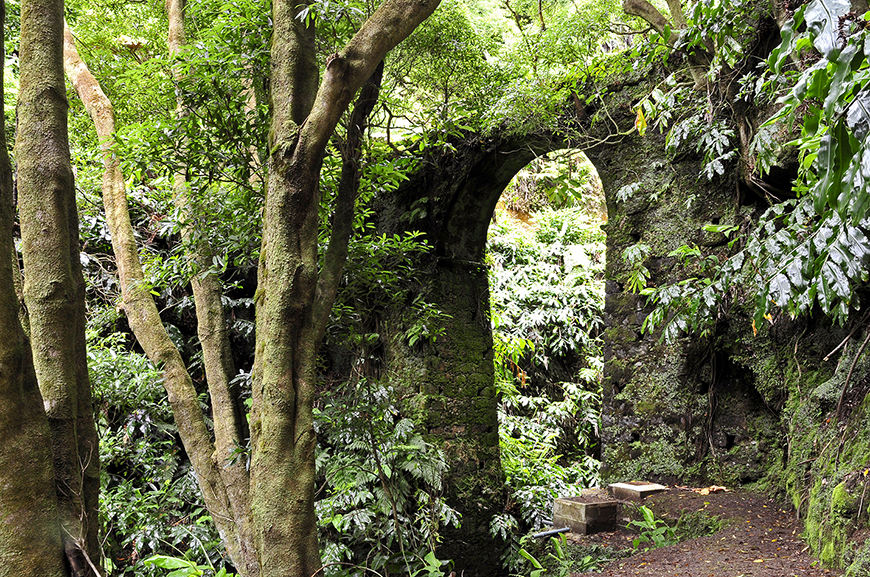
CLASSIFICAÇÃO DE
ROCHAS ÍGNEAS e MINERAIS
“Antes do século XIX, os corpos, as rochas e os minerais não eram bem distinguidos. Desta forma, a classificação de rochas por meio de modo de ocorrência geológica, idade geológica e cor visual característica era comummente praticada, havendo mais de 1000 nomes.
Atualmente, a classificação de rochas ígneas é baseada na textura, principalmente granulometria, e composição mineralógica quantitativa, e subordenadamente na textura específica, composição química, gênese, modo de ocorrência, etc. A granulometria é representada pelas categorias grossa, média e fina, e a composição mineralógica é pelo índice de cor, proporção entre feldspato alcalino e plagioclásio, composição de plagioclásio, etc….

De acordo com a cristalinidade as rochas são classificadas em:
1) Holocristalina; 2) hipocristalina; 3) vítrea.
Holocristalina: A rocha é composta inteiramente de cristais. A maioria das rochas ígneas se encaixa nessa categoria. Todas as rochas plutônicas são holocristalinas. As expressões rocha cristalina e embasamento cristalino, encontradas na literatura tradicional, correspondem respectivamente à rocha holocristalina e ao embasamento continental constituído por rochas holocristalinas, tais como granito e gnaisse, sobretudo de granulometria grossa e de idade precambriana. Entretanto, tais expressões tendem a serem menos utilizadas nas publicações recentes. As rochas holocristalinas são formadas através de resfriamento relativamente lento do magma. O prefixo holo significa totalmente.
Hipocristalina: É chamada também de hialocristalina: A rocha é constituída por uma mistura de cristais e vidro. As rochas hipocristalinas são formadas através de resfriamento. Determinadas rochas constituintes de lavas são hipocristalinas. Os prefixos hipo e hialo significam, respectivamente, pouco e vítreo.
Vítrea:É chamada também de holohialina. A rocha é composta quase inteiramente de vidro, o que significa resfriamento magmático extremamente rápido. Algumas rochas vulcânicas constituintes de lavas, tais como a obsidiana, são vítreas.

Encontram-se os seguintes termos utilizados na literatura para representar a granulometria macroscópica de rochas ígneas:
Fanerocristalina:A rocha é constituída por minerais de tamanho distinguível, ou seja, identificável a olho nu ou em lupa. Todas as rochas de granulometria grossa e uma parte das rochas de granulometria média se encaixam nesta categoria.
Afanítica:A rocha é composta de minerais de granulometria fina, sendo indistinguíveis a olho nu ou em lupa. Em muitas publicações, a expressão textura afanítica é utilizada para expressar textura da massa fundamental de rochas porfiríticas.

O mineral constituinte de rochas ígneas é classificado por meio de diafaneidade microscópica, ou seja, grau de transparência, em três categorias:
1) Minerais incolores; 2) minerais coloridos; 3) minerais opacos.
Minerais incolores:Minerais transparentes em lâminas delgadas e, normalmente brancos ou de cor clara a olho nu. Muitos minerais coloridos a olho nu se tornam incolores nas lâminas delgadas. São normalmente silicatos, compostos principalmente de SiO2, Al2O3, Na2O e K2O com baixo teor de MgO e FeO. Sob o ponto de vista químico, esses são chamados como minerais félsicos. Quartzo, feldspato alcalino, plagioclásio e feldspatóides são exemplos. O peso específico é geralmente baixo.
Minerais coloridos: Minerais coloridos, translúcidos, em lâminas delgadas e de cor escura a olho nu. Normalmente, são silicatos compostos principalmente de SiO2, MgO, FeO e Fe2O3, sendo caracterizados por alto teor de MgO e FeO. Sob o ponto de vista químico, são chamados como minerais máficos. Olivina, ortopiroxênio, clinopiroxênio, hornblenda e biotita são exemplos. O peso específico é geralmente alto, sendo superior a bromofórmio.
Minerais opacos: Minerais opacos mesmo nas lâminas, e possuem frequentemente brilho metálico. Quimicamente são óxidos, sulfatos e hidróxidos de metais pesados. Magnetita, ilmenita e pirita são exemplos. O peso específico é geralmente muito alto, sendo chamado de minerais pesados.

PARA REALIZAR E REGISTAR ESTA EARTHCACHE:
PERGUNTAS:
Para “encontrar/registar” esta cache deverá: provar que esteve no local e responder às seguintes questões, enviando um email/mensagem de Geocaching, com as respostas, em português ou em inglês, para o nosso perfil.
Só depois, de enviar as respostas, e conforme as “guidelines” para as Earthcaches, deverá efetuar o seu registo!
Serão removidos todos os registos que não obedeçam a estes requisitos.
Com base no tema desta earthcache, responda às seguintes questões:
1. Em frente ao GZ e em cima, localiza-se a famosa “Janela do Inferno”!
a) Classifica o tipo de rocha existente nesta “janela”.
b) A partir da tua observação, diz se no seu interior a “janela” é fechada ou aberta.
c) Na tua opinião, qual terá sido o fenómeno (ou fenómenos) que conduziu ao aparecimento desta “janela”? De que “tipos”?
d) Estima, por comparação e a partir da tua observação, a altura a que se encontra a “janela”, bem como o seu diâmetro aproximado.
2. No GZ (que se localiza na base da ribeira, onde se “atravessa” para o outro lado), existem várias rochas (chamadas microsienitos) brancas (claras ou esbranquiçadas), quer na água, quer em terra (entre as outras rochas), com cristais. Estas rochas têm um comprimento médio que varia entre 2 e 10 centímetros. A partir dos dados existentes no listning desta earthcache e a partir das tuas observações, responde às seguintes questões:
a) Qual a cor de, pelo menos, dois dos cristais (minerais) visíveis?
b) Qual o diâmetro mínimo e máximo deste cristais?
c) Os cristais visíveis são: euédricos (com faces bem formadas), subédricos (com faces incompletas) ou anédricos (sem faces)?
d) Classifica estas rochas, a partir:
d1) da cristalinidade destas rochas.
d2) a partir da sua granulometria.
d3) em que categoria do grau de “transparência”, classificas o
mineral constituinte destas rochas ígneas ou plutónicas
(microsianito)?
e) Identifica pelo nome, pelos menos, dois dos cristais presentes.
3. TAREFA OBRIGATÓRIA:Deverá tirar uma foto sua, onde você apareça (ou com um papel/placa onde conste o seu nickname e a data da visita) e que comprove a sua presença no GZ desta EC - NÃO METAM SPOILERS. Esta foto deverá ser colocada no seu registo ou enviada por email ou sistema de mensagens de Geocaching, para o owner!
Não publique fotos das rochas com os cristais.
Não responderemos ao seu contato, a não ser que haja algum “problema” com as suas respostas ou registo.

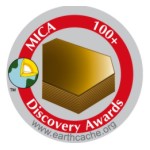


HELL WINDOW CRYSTALS
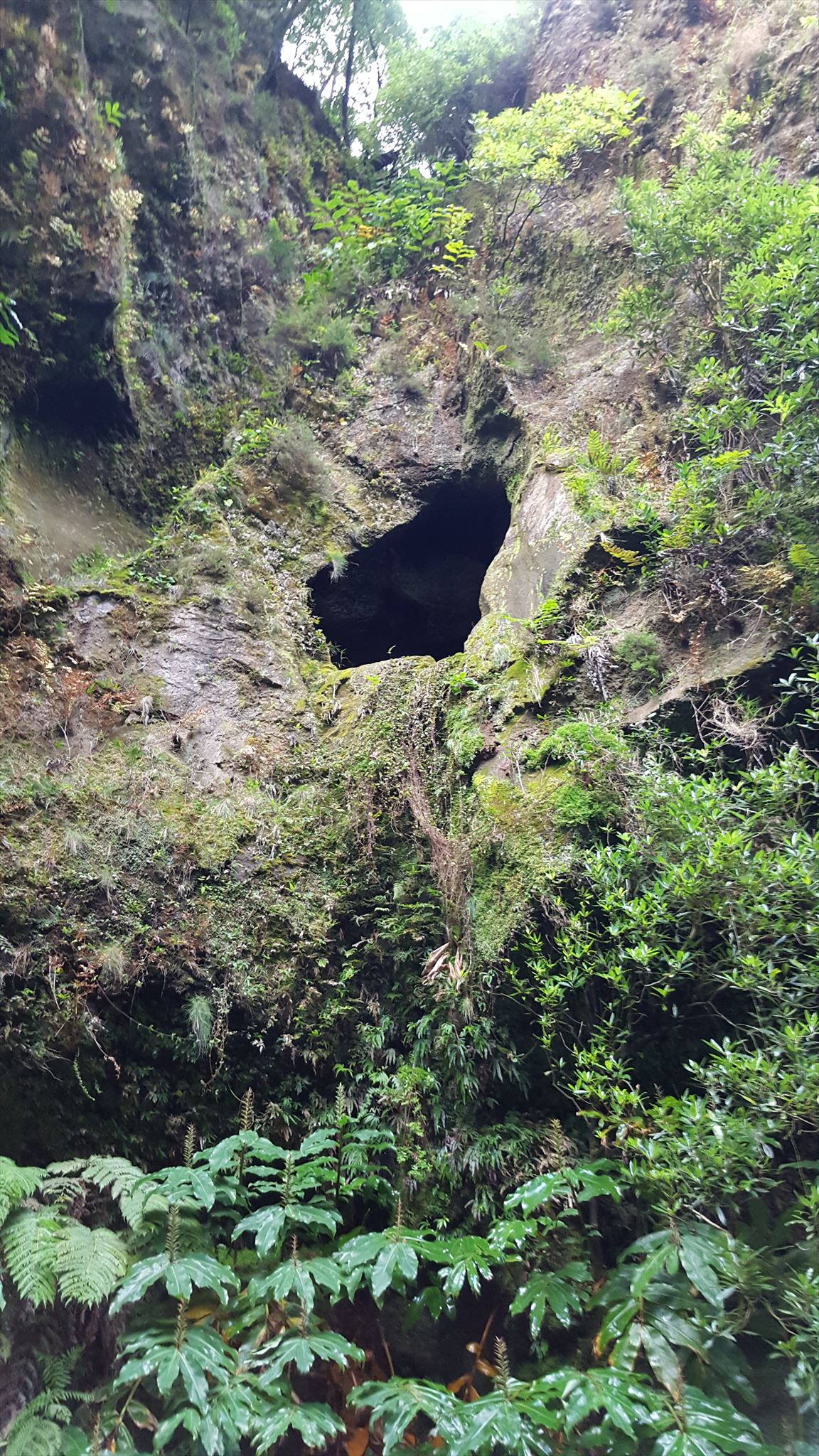
EARTHCACHE

ENGLISH

“HELL WINDOW”
“Rota da Água - Janela do Inferno - São Miguel” PRC 37 SMI


INFORMATION
Category - Circular
Difficulty - Easy
Extension - 7.3 km
Average Time - 2:30 p.m.

"This small circular route begins at the picnic park of Remédios, Lagoa county. This route has several tunnels along its length, so it is advisable to use a flashlight in its transposition. Follow the signs along the road that goes up to Lagoa do Fogo, turning right onto a cement path that gives access to several agricultural pastures. Continue until you find a turning to the right for a dirt road heading south, between Pico da Mariana and Pico da Cova. When you arrive at a junction, you must take the path to the right and then to the left, passing through the interior of a pasture. The route follows an old aqueduct, in the form of a tunnel, about 50 m long. From here the trail develops along the Ribeira Seca, crossing a series of imposing aqueducts that served in the past the former Alcohol Factory of Lagoa and currently make the public water supply to the county.

A little later you will reach a place of interest - Window of Hell - a vertical wall, rich in springs and where you can see a cavity created by the erosive power of water. At the base there is a natural pool, where it is possible to observe Triturus (Triturus cristatus) at various stages of its life cycle (aquatic, juvenile and biting larvae). Enjoy to enjoy the beauty of this place and to renew the forces.
Take the route in the reverse direction, along the left bank of the Ribeira Seca, reaching another tunnel excavated in the earth, which facilitates the passage of water at ground level. After crossing the tunnel the path follows through agricultural pastures back to the starting point. Along this route enjoy the wide views under the municipality of Lagoa and Ponta Delgada”.
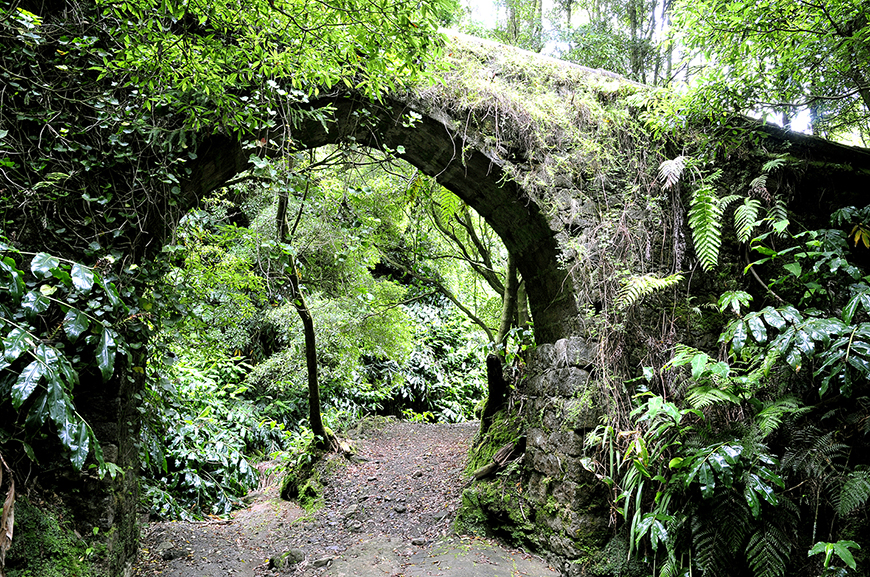
CLASSIFICATION OF
GYMNASTIC AND MINERAL ROCKS
"Before the nineteenth century, bodies, rocks and minerals were not well distinguished. In this way, the classification of rocks by way of geological occurrence, geological age and characteristic visual color was commonly practiced, with more than 1000 names.
Currently, the classification of igneous rocks is based on texture, mainly granulometry, and quantitative mineralogical composition, and subordination on specific texture, chemical composition, genesis, mode of occurrence, etc. The granulometry is represented by the coarse, medium and fine categories, and the mineralogical composition is by color index, proportion between alkaline feldspar and plagioclase, composition of plagioclase, etc ....
According to the crystallinity the rocks are classified in:
1) Holocrystalline; 2) hypocrystalline; 3) glassy.
Holocrystalline: The rock is composed entirely of crystals. Most igneous rocks fit into this category. All plutonic rocks are holocrystalline. The terms crystalline rock and crystalline foundations, found in the traditional literature, correspond respectively to holocrystalline rock and to the continental basement constituted by holocrystalline rocks, such as granite and gneiss, especially of coarse granulometry and precambrian age. However, such expressions tend to be less used in recent publications. Holocrystalline rocks are formed by relatively slow cooling of the magma. The prefix holo means totally.
Hypocrystalline: It is also called hyalocrystalline: The rock is made up of a mixture of crystals and glass. Hypocrystalline rocks are formed through cooling. Certain lavas constituent rocks are hypocrystalline. The hypo and hialo prefixes mean, respectively, little and vitreous.
Vitreous: It is also called holohialina. The rock is composed almost entirely of glass, which means extremely fast magmatic cooling. Some lava-forming volcanic rocks, such as obsidian, are vitreous.

The following terms are used in the literature to represent macroscopic granulometry of igneous rocks:
Fanerocristalina: The rock consists of minerals of distinguishable size, that is, identifiable to the naked eye or in a magnifying glass. All the rocks with a large particle size and a part of the rocks of medium granulometry fall into this category.
Afanítica: The rock is composed of minerals of fine granulometry, being indistinguishable to the naked eye or in magnifying glass. In many publications, the term aphrotic texture is used to express texture of the fundamental mass of porphyritic rocks.
The mineral constituent of igneous rocks is classified by means of microscopic diaphaneity, that is, degree of transparency, in three categories:
1) Colorless minerals; 2) colored minerals; 3) Opaque minerals.
Colorless minerals: Transparent minerals in thin blades, usually white or light to the naked eye. Many colored minerals with the naked eye become colorless on the thin blades. They are usually silicates, composed mainly of SiO2, Al2O3, Na2O and K2O with low content of MgO and FeO. From the chemical point of view, these are called felsic minerals. Quartz, alkaline feldspar, plagioclase and feldspathoids are examples. The specific weight is generally low.
Colored minerals: Colorful, translucent minerals, thinly sliced and dark in color with the naked eye. Usually, silicates are composed mainly of SiO2, MgO, FeO and Fe2O3, being characterized by high content of MgO and FeO. From the chemical point of view, they are called mafic minerals. Olivine, orthopyroxene, clinopyroxene, hornblende and biotite are examples. The specific weight is generally high, being greater than bromoform.
Opaque minerals: opaque minerals even on the blades, and often have metallic luster. Chemically they are heavy metal oxides, sulfates and hydroxides. Magnetite, ilmenite and pyrite are examples. The specific weight is usually very high, being called heavy minerals.

TO PERFORM AND LOG THIS EarthCache:
QUESTIONS:
To "find / register" this cache must: prove that visited the site and answer the following questions by sending an email / message Geocaching, with answers (in Portuguese or in English, only) to our profile.
Only later, sending the answers, and as the "guidelines" for EarthCaches should make your registration! They will be removed from all records that do not meet these requirements.
Based on the theme of this earthcache, answer the following questions:
1. In front of the GZ and above, the famous "Window of Hell" is located!
a) Classifies the type of rock in this "window".
b) From your observation, it says if inside the "window" is closed or
open.
c) In your opinion, what has been the phenomenon (or phenomena)
that led to the appearance of this "window"? Of what "types"?
d) Estimate, by comparison and from your observation, the height of
the "window", as well as its approximate diameter.
2. In the GZ (which is located at the base of the river, where it "crosses" to the other side), there are several rocks (called “microsienites”) white (clear or whitish), either in water or on land (among other rocks) With crystals. These rocks have an average length that varies between 2 and 10 centimeters. From the data in the list of this earthcache and from your observations, answer the following questions:
a) What is the color of at least two visible (mineral) crystals?
b) What is the minimum and maximum diameter of these crystals?
c) The visible crystals are: euhedral (with well-formed faces), subhedral
(with incomplete faces) or anhedral (without faces)?
d) Classify these rocks from:
d1) of the crystallinity of these rocks.
d2) from its granulometry.
d3) in which category of degree of "transparency", classify the
Mineral constituent of these igneous or plutonic rocks
(“Microsianito”)?
e) Identify at least two of the crystals present by name.
3. TASK (not optional): You must take a picture of yourself, where do you show up, (or with a paper / plaque with your geocaching nickname and the date of the visit) and that proves your presence in the GZ of this EC - no spoilers please. This photo must be placed in your log or sent by email or Geocaching messaging system, to the owner!
Do not post photos of rocks with crystals.
We do not respond to your touch, unless there is a "problem" with their answers or register.
